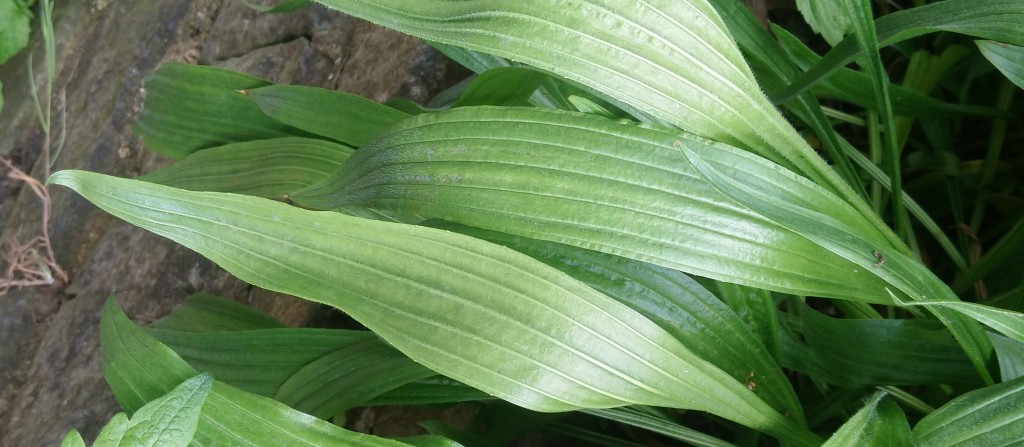
[271] Plantago lanceolata, Ribwort Plantain
Plantago major, Greater Plantain
Introduction
Plantago lanceolata, Ribwort Plantain, and Plantago major, Greater Plantain, are two similar species of common and widespread wild plants generally considered as weeds.
Many of the two hundred species of Plantago are also called Plantains. Plantago lanceolata is also known as Narrowleaf Plantain, English Plantain, Ribleaf, Buckthorn and about twenty other common names. Plantago major is also known as Common Plantain, Broadleaf Plantain and a few other common names.
They should not be confused with the Plantains that are types of bananas, (cultivars of the Musa genus,) or with Plane trees (the genus Platanus,) previously sometimes known as Plaintains.
Taxonomy
Kingdom – Plants
Division – Vascular Plants
Class – Angiosperms (Flowering Plants)
Order – Lamiales
Family – Plantaginaceae
Tribe – Plantaginae
Genus – Plantago
Scientific Names – Plantago lanceolata, Plantago major
Cultivars are available for both species.
Name
In classical Latin the word plantago was used for some species of the genus Plantago, derived from planta, ‘sole of the foot’ because of its flat nature. The English Plantain comes from cognate roots.
Lanceolata means shaped like a lance and, of course, major means greater.
(The banana-like plantain is not cognate and gets its name from a native South American name.)
Plantago major
I am starting with Plantago major, because it is more common and widespread as a garden weed, more well-known and the typical, defining type of Plantain.
To most people it’s a common garden weed, especially a lawn weed, and most people would call it just a plantain.
It’s a very low growing plant with a rosette of almost circular leaves with long petioles (stalks that connect the leaves to the stems.) The leaf has about half a dozen distinct veins across its length.
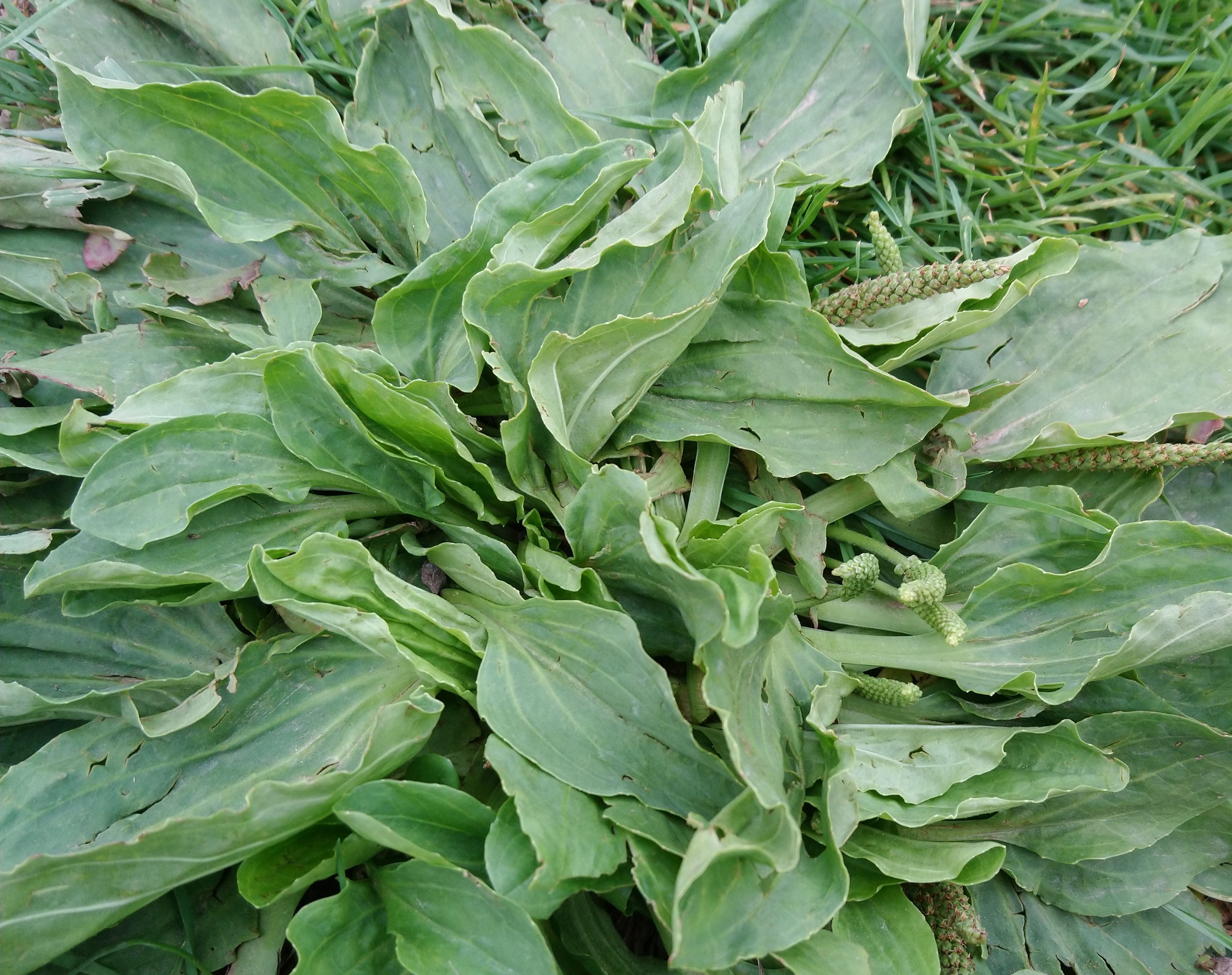

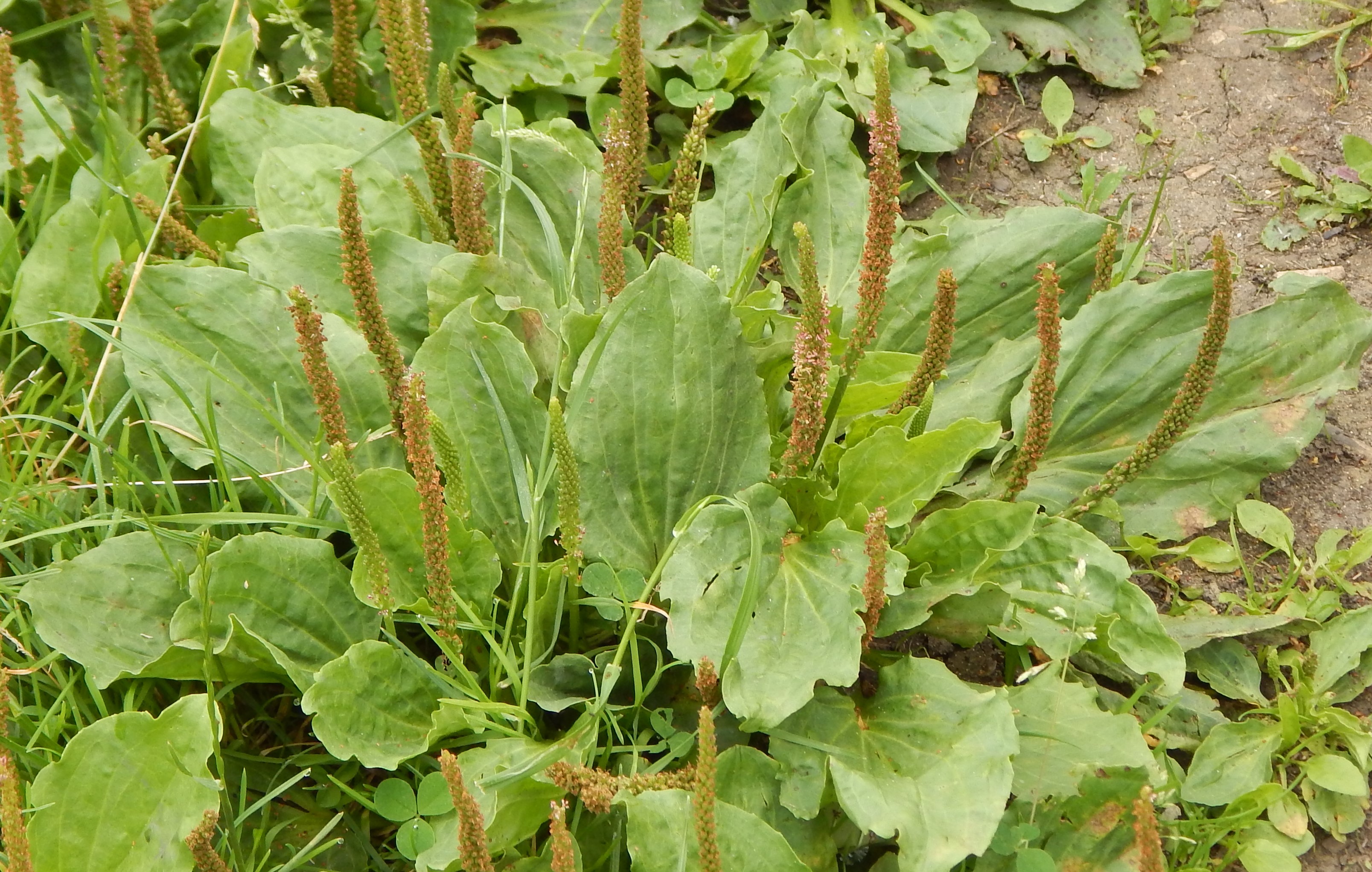
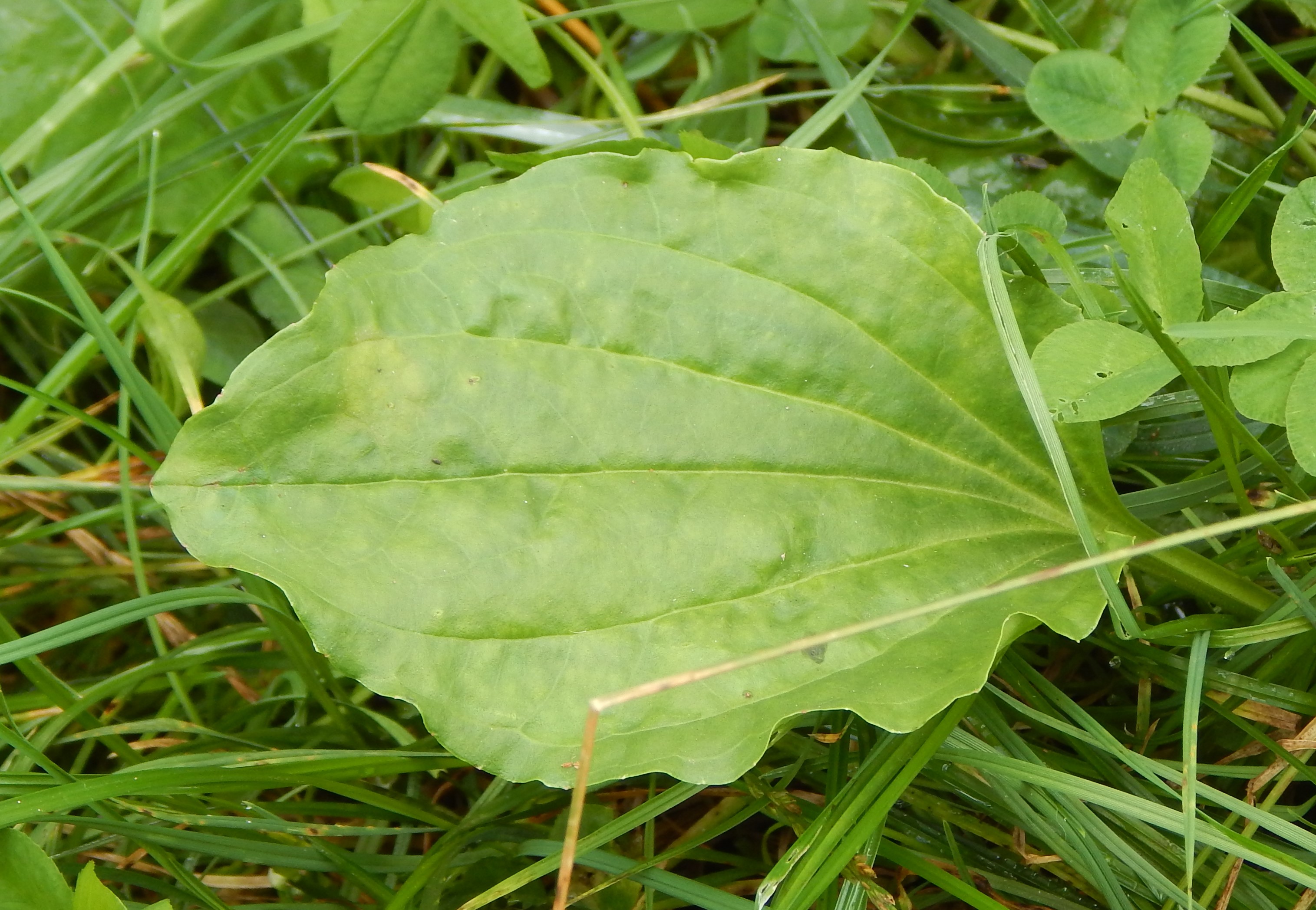
Each plant has several short stems, each with a long spike of very small flowers. The flowers are inconspicuous, greenish brown with purple stamens, becoming equally inconspicuous tiny green fruits.




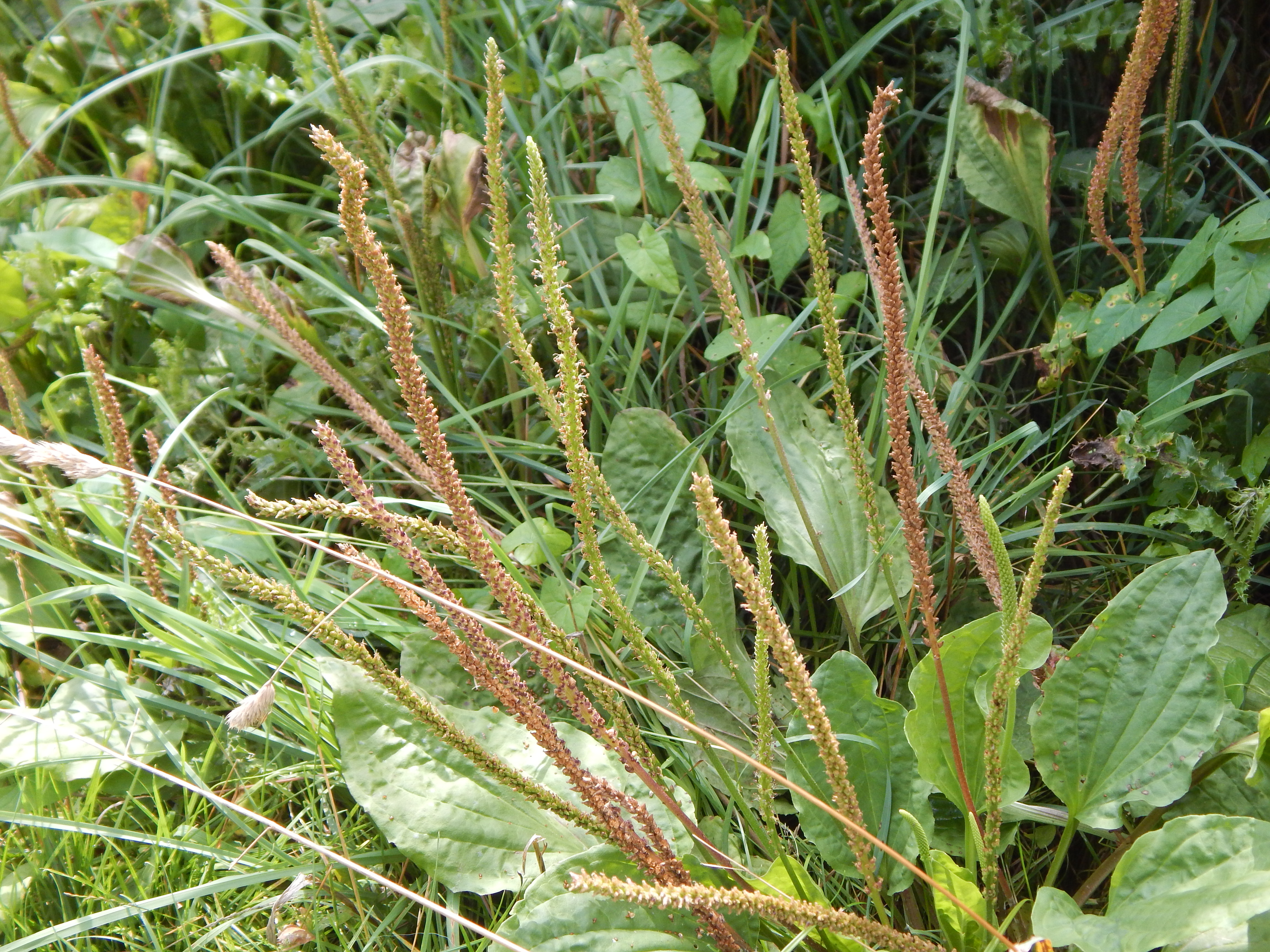

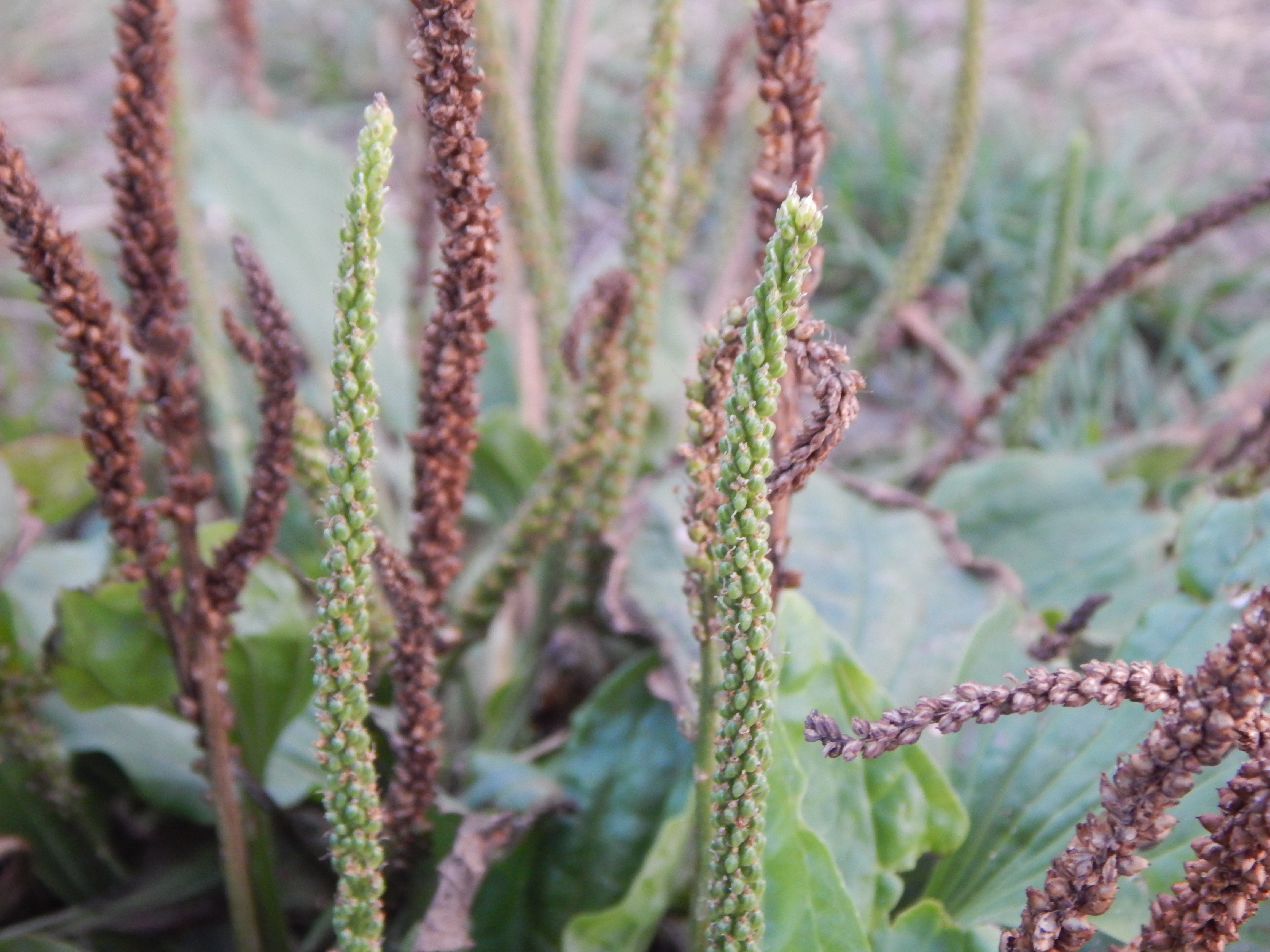
It is found over most of Europe and much of Asia. In the UK it is widespread and very common, often as a weed in any open land – including gardens and pavements.

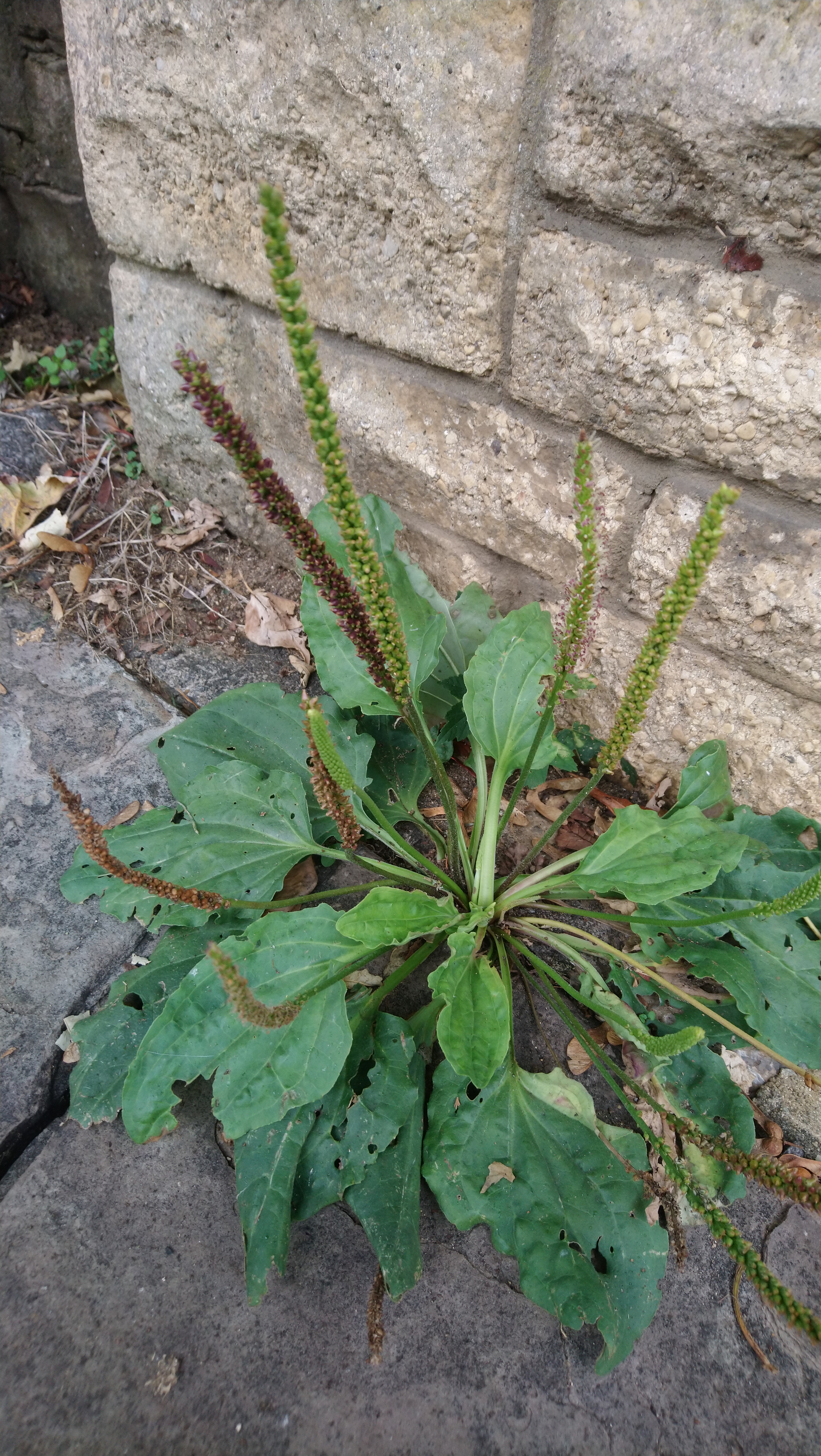
Its flat nature enables it to survive well in well-mown or well-trodden grass.

It has cultivated varieties, some with purple or variegated leaves.
Plantago lanceolata
Plantago lanceolata is common and widespread over Eurasia including the whole of the UK. Its leaves are longer and thinner than Plantago major and are pointed at both ends, something like [173] Bristly Ox-tongue in shape but not in texture. Leaves have marked longitudinal veins that give the plant its name and they may be held almost vertically.
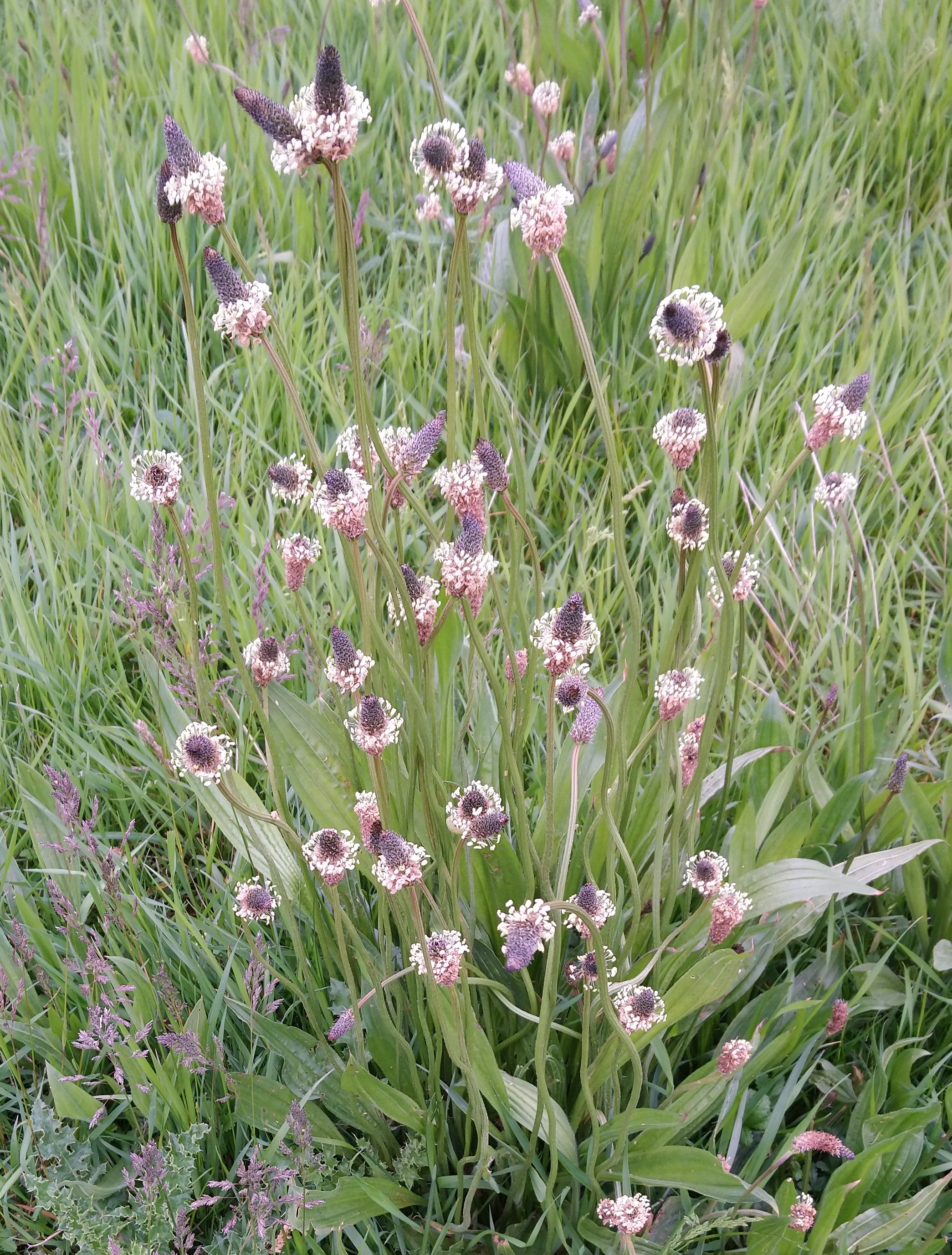
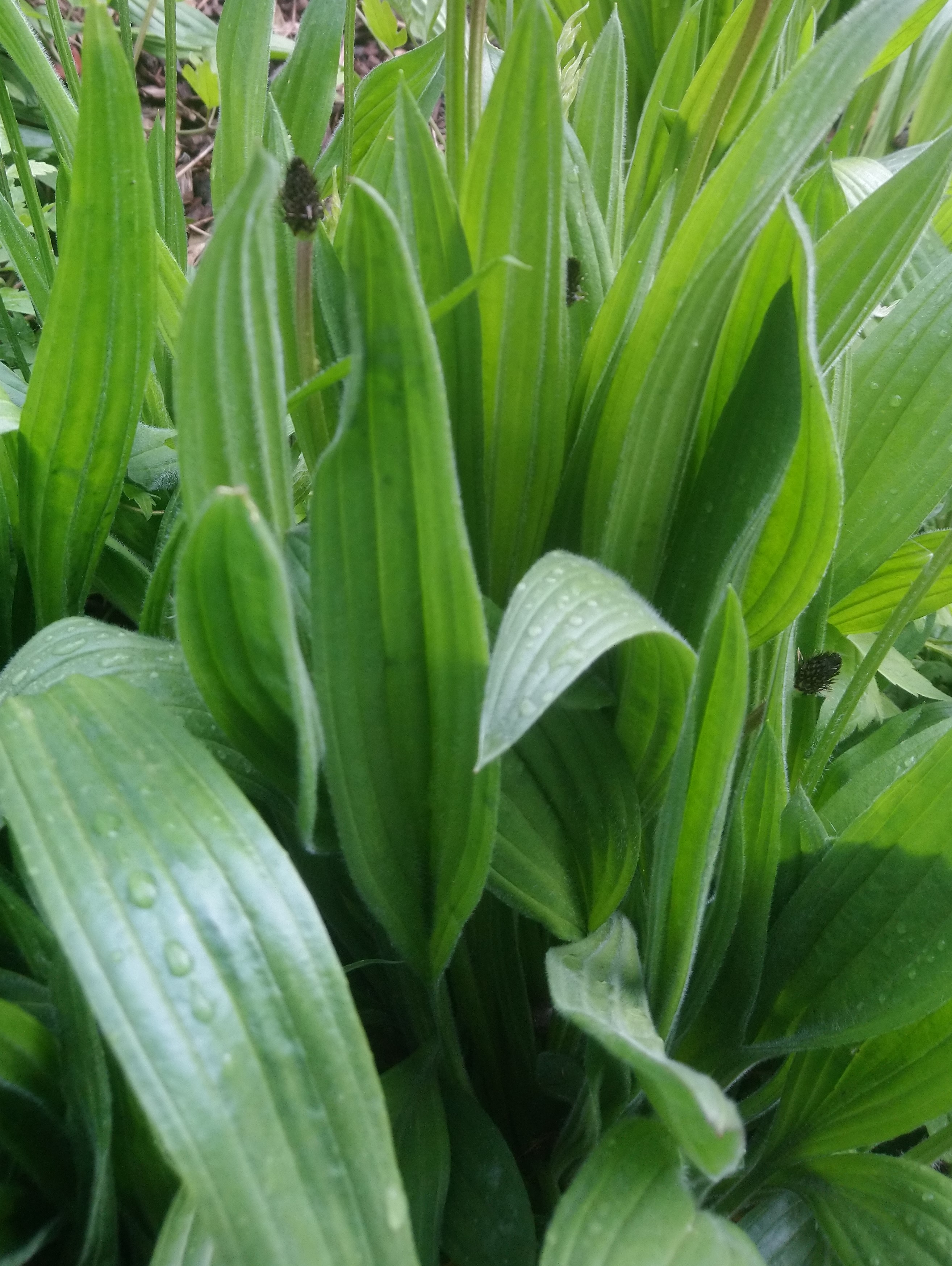


The flower stalk can be quite tall. Many tiny flowers gradually open along the long, thin inflorescence. They are insignificant and brown with prominent white stamens.
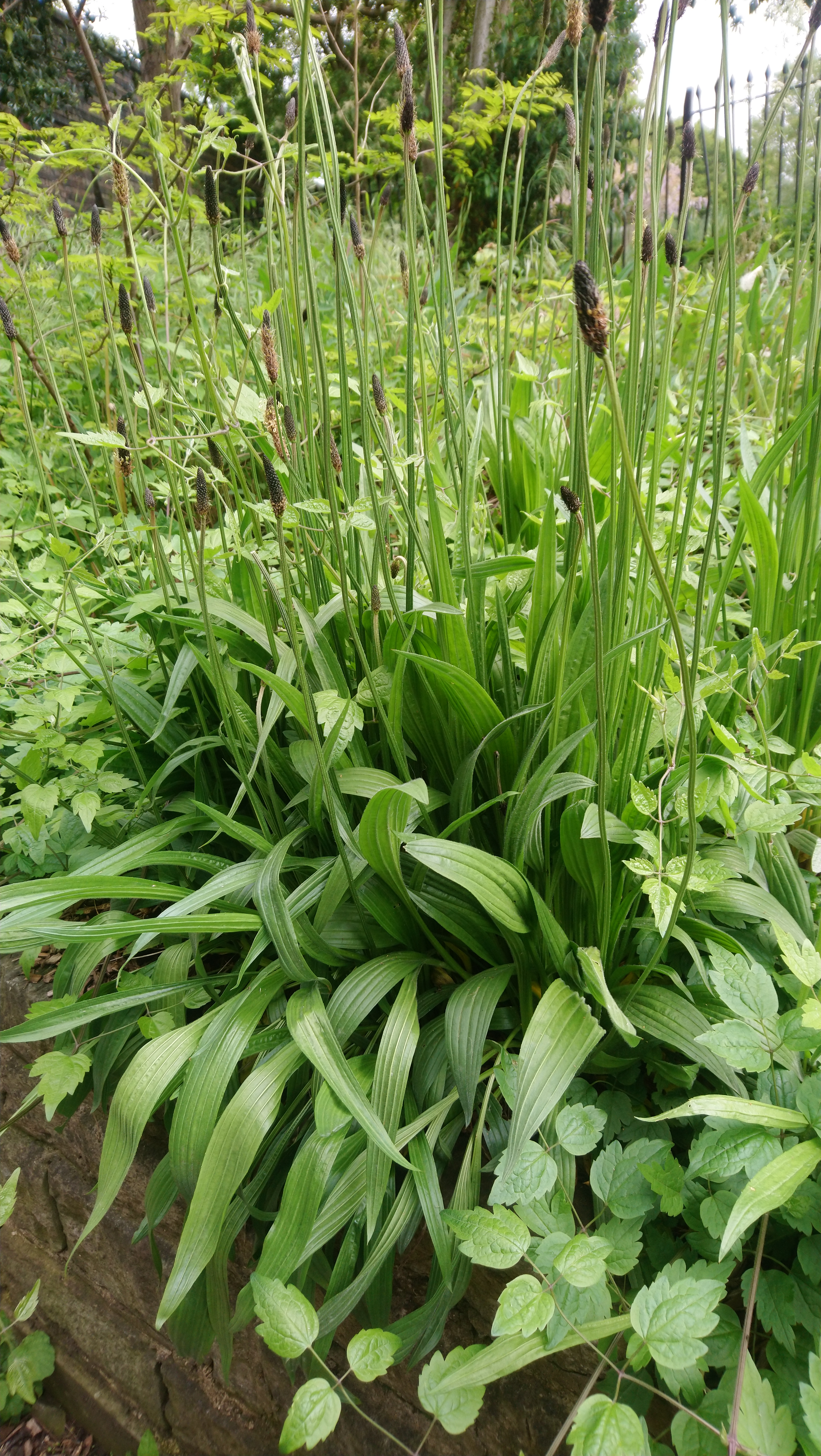
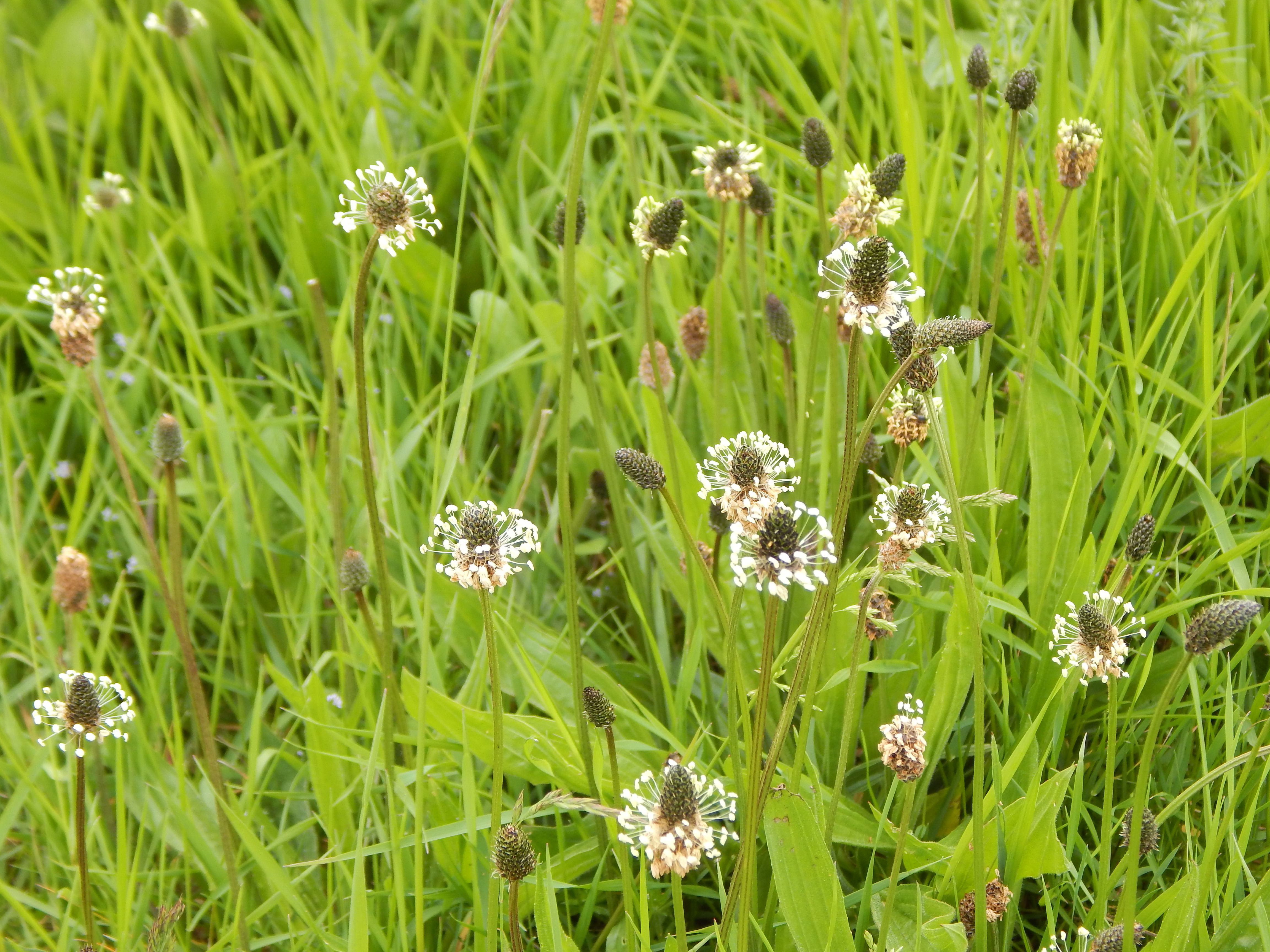
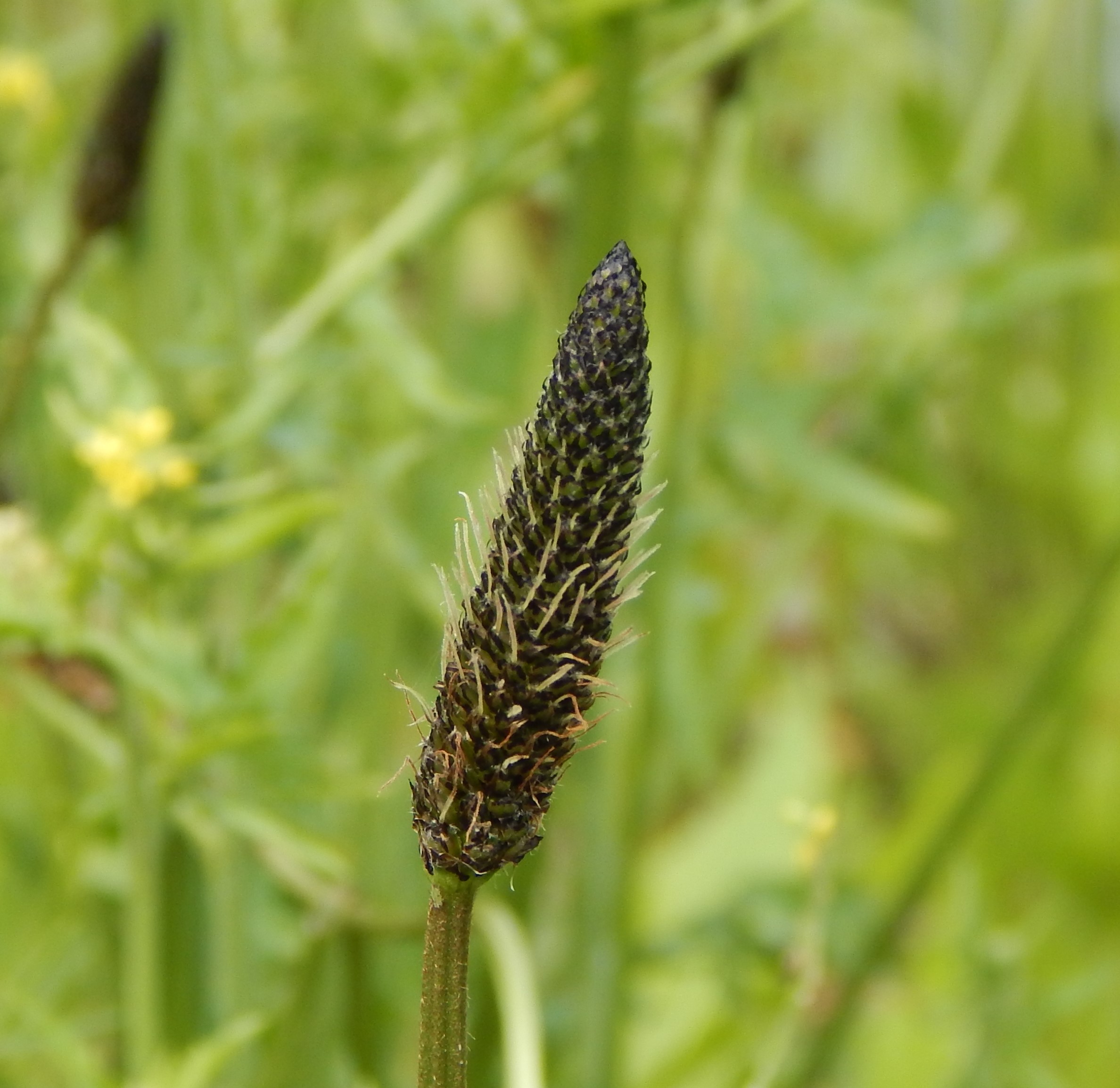
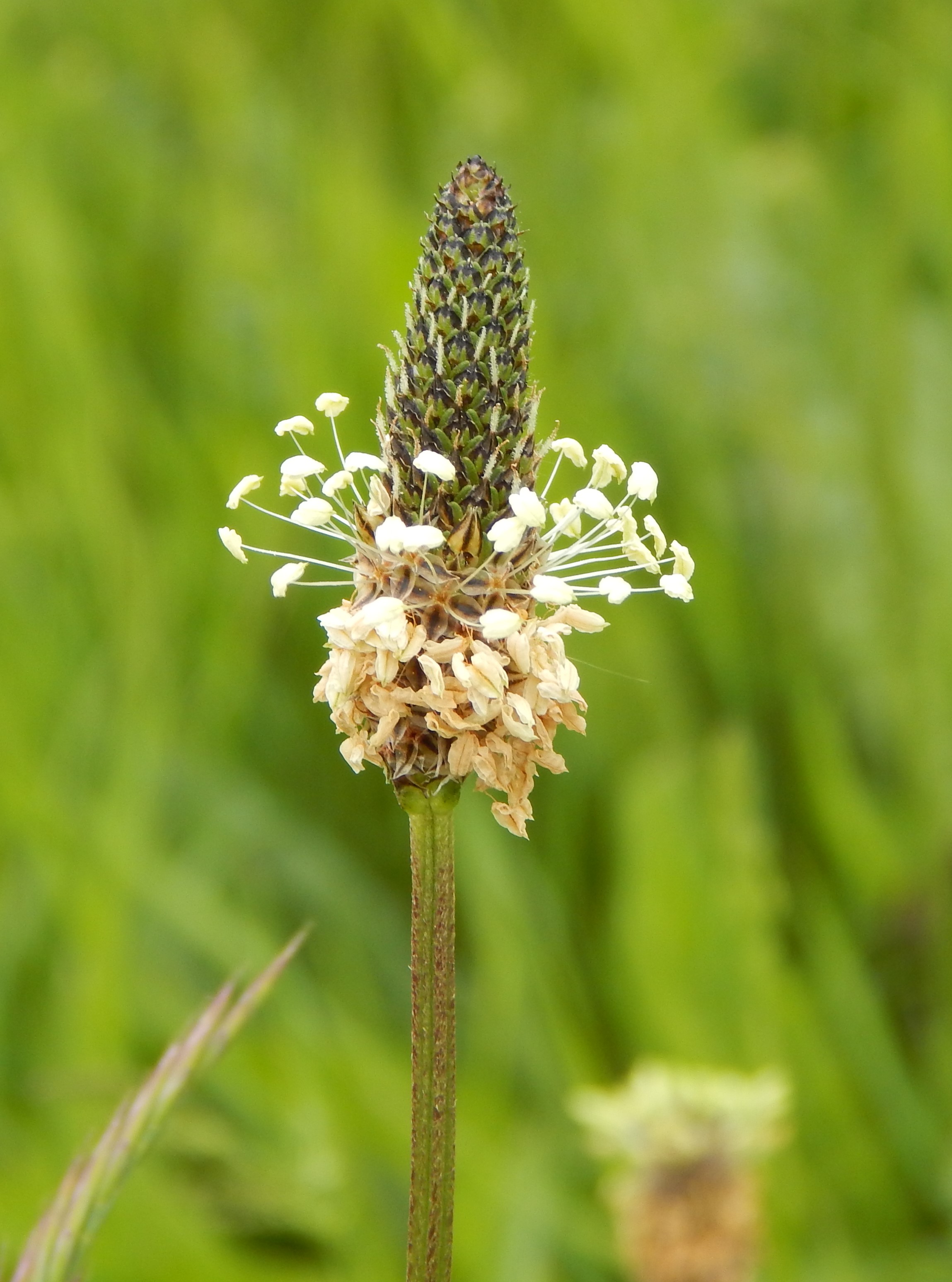
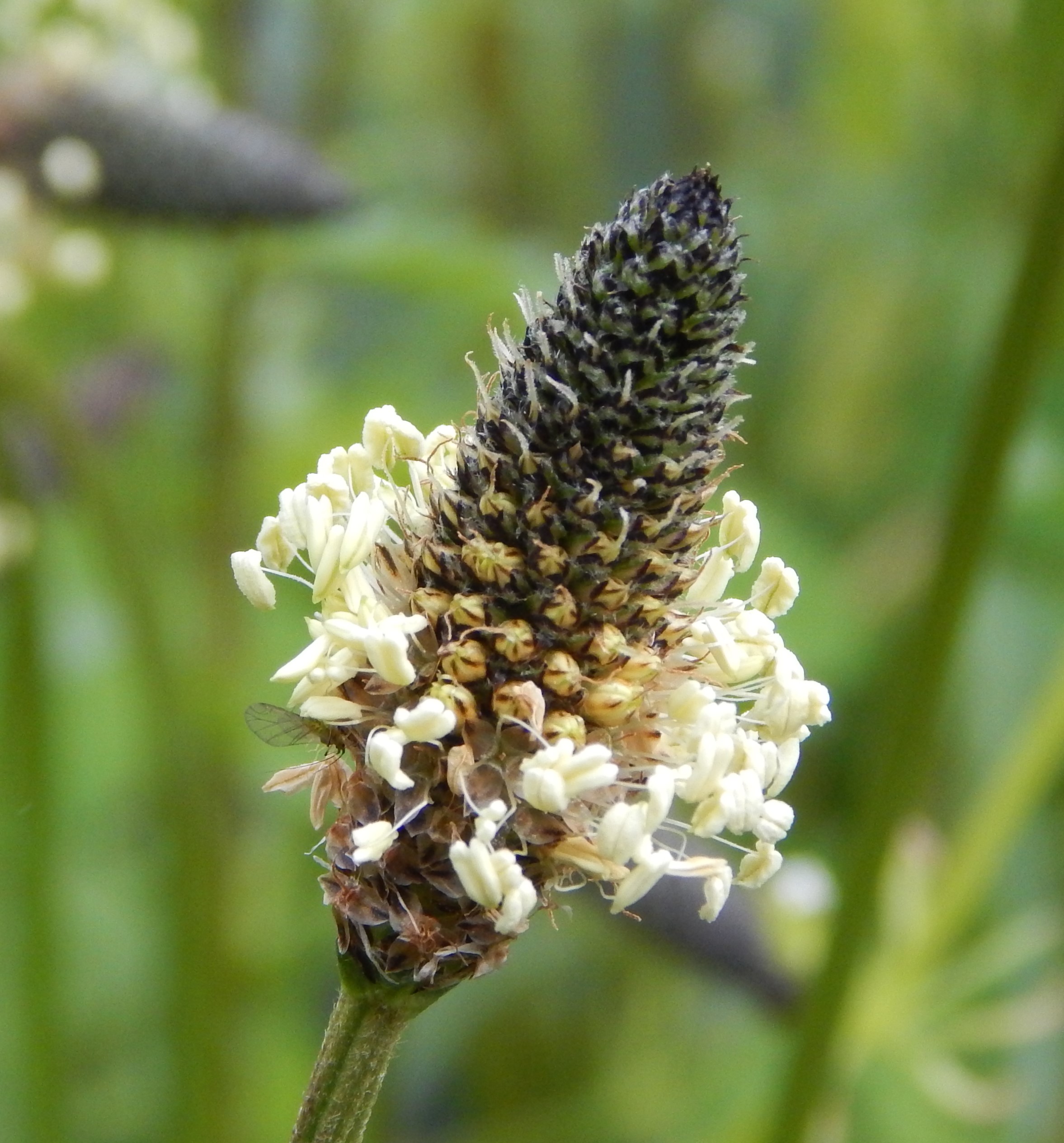


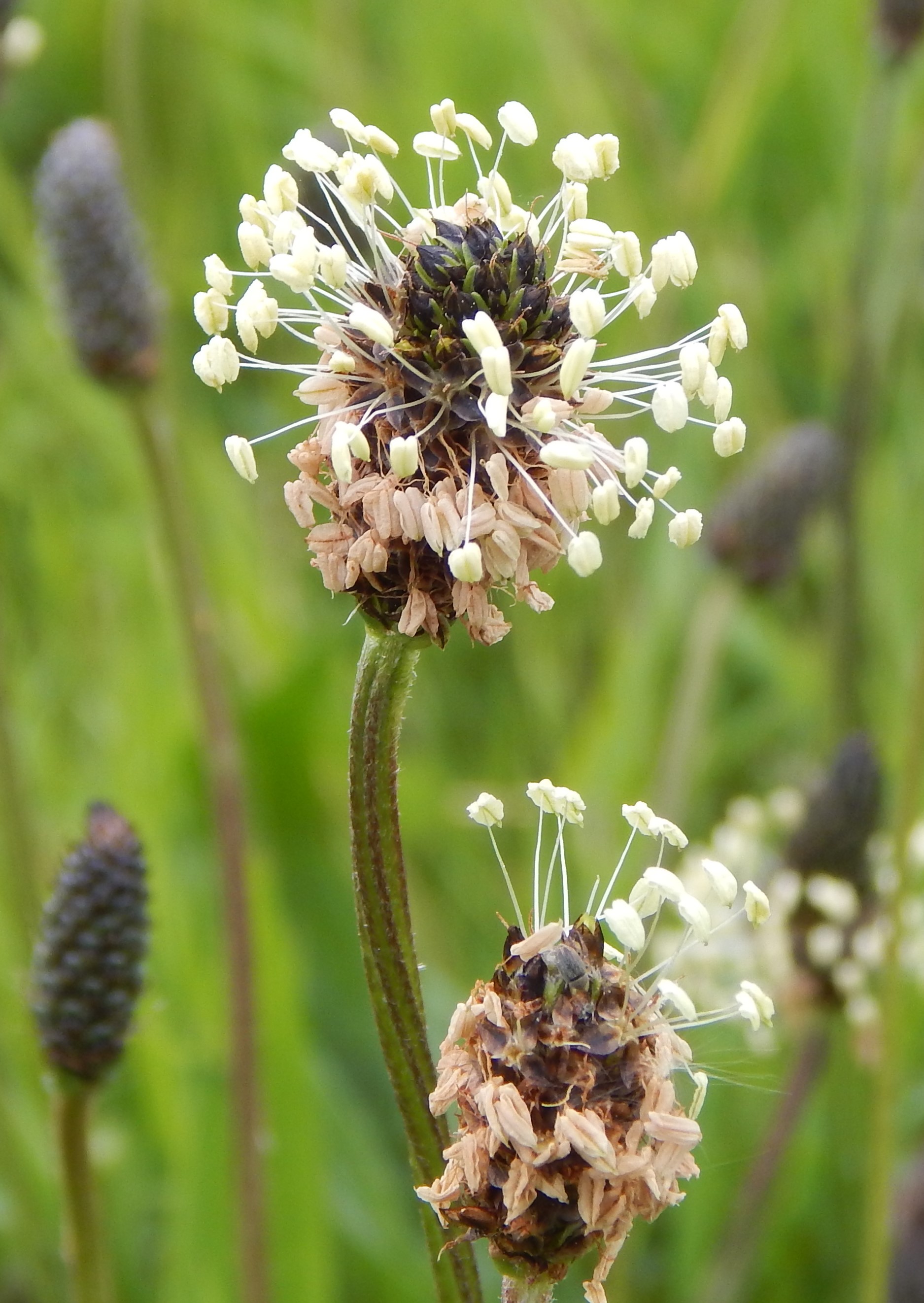
Ribwort Plantain grows almost anywhere, doing well in disturbed areas like roadside verges and open grassland. It can grow tall on unmown grass but can adapt in mown areas to a flatter form.
Rather surprisingly, both species are available in cultivated varieties.
Other Notes
Long before I started this blog, I was aware of Plantago major as a weed in lawns that kept flat and was difficult to eradicate. I have only discovered Plantago lanciolata recently but now I see it perhaps more often on my walks. This may be because it is more erect and visible. It is certainly more evident when in flower.
